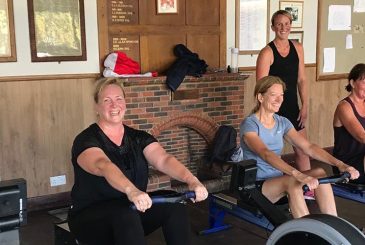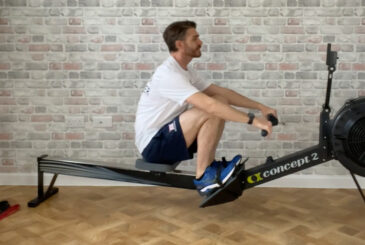Now you have the basic technique on the indoor rower, how can you improve further?
My recommendation would be to invest time in understanding your rowing-specific strengths and weaknesses. Consider the key areas of mobility, flexibility, strength, power and aerobic capacity – once you have a grip on these, you can build a more effective programme to improve.
Here are three things to consider:
- Monitor technical progression – You can do this by keeping video diaries, spending more time with the mirror and checking out coaching apps and more.
- Training zones – Indoor rowing over the 2k competition distance is mainly an aerobic affair, but if you don’t have the luxury of training full-time try mixing training zones in your sessions to supercharge your scores. Try interspersing main aerobic blocks with anaerobic intervals and sprint work to maximise results from limited training time.
- Exercises – Make them specific to your rowing goals. Don’t just hammer out the same old weights every time you hit the gym.
5 gym exercises to make the most of your indoor rowing training time
Modify these everyday exercises to boost your rowing-specific strength and challenge your core…
1. Single arm overhead lunge with kettlebell
Take your everyday lunge and hold a kettlebell overhead in the opposite arm to the leg you are lunging with. This tweak recruits the stabilising muscles around your shoulder girdle and challenges your core to resist the lateral and rotational force of having the weight in this position. This is good for:
- Leg strength
- Power transfer from footplate to handle
- Back health
2. Tuck pull-ups
Pull-ups with a difference. Raise your knees to a 90° angle to your body so you are essentially in a hanging seated position then complete your normal pull-up set. For a more advanced challenge, try holding your legs out straight. Try to avoid hyper-extending your lumbar spine by keeping your abdominals tight. This is good for:
- Pull strength
- Balancing anterior and posterior core strength
- Back health
3. Overhead Squats
Just by changing the loading point in this everyday rowing staple you can strengthen the stabilising muscles around your shoulders, improve upper body mobility and work the deep supporting muscles around your spine. This is good for:
- Leg strength
- Back health
- Upper body mobility
- Power transfer from feet to handle
4. TRX*/Rope hip hinge (*total resistance equipment)
Instead of your normal seated row try the following: set up opposite a partner in a seated position with your feet flat against each other and a slight bend at the knee. Put your hands on a TRX or a rope and hold a strong neutral posture; now hinge from the hips to work both the eccentric and concentric movements against your partner. This is good for:
- Back health
- Hip hinge strength
- Mid-stroke acceleration
5. Overhead plate rock-overs
Rather than your normal reverse hyperextensions, try the following: hold a weight plate overhead with your legs in the quarter slide position on a rowing machine. Next, rock forwards and backwards to just before the point where you struggle to maintain this structure. Make sure you maintain a straight line from the plate to your hips. This is good for:
- Thoracic strength
- Upper body stability
- Power transfer
- Back health
Monitoring technical progression
My top five tips for monitoring your progress – with or without a coach, are as follows.
1. Coach’s Eye app
A landmark app! It allows you to take video in HD, slow it down, draw on it, highlight areas of concern/improvement and overlay it against historic footage or video from a more technically accomplished rower. I use it nearly every day.
Go to https://www.coachseye.com/
2. Good old video
Use your phone (most are HD now!) or camera to shoot yourself on the rowing machine and either stream live to your laptop in front of you for real-time feedback or store in a video diary to monitor technical progression over the season or towards a key event.
3. Google Drive
A good way of keeping tabs on progression is to have a dated video diary folder and Google Drive is the perfect tool. It’s accessible to both you and your coach at all times and you can link the video to a training diary when reviewing your programme to inform future decisions. Sometimes it’s useful to look back at this, especially if you’ve been going through a tough patch because you can be reminded of how far you have come.
4. Mirror
If you’re not in love with your mirror then consider getting better acquainted. It’s the perfect self-help tool and available pretty much everywhere you train. Invest some time in understanding how a good rowing stroke should be structured on an indoor rower then use this mental picture to adapt your movements in the mirror.
5. Group training
If you have a friend who’s more advanced than you then why not train together? You’ll learn through good feedback and conversations and you won’t be training on your own. Teaching is a great way to learn as well so benefits are mutual.










